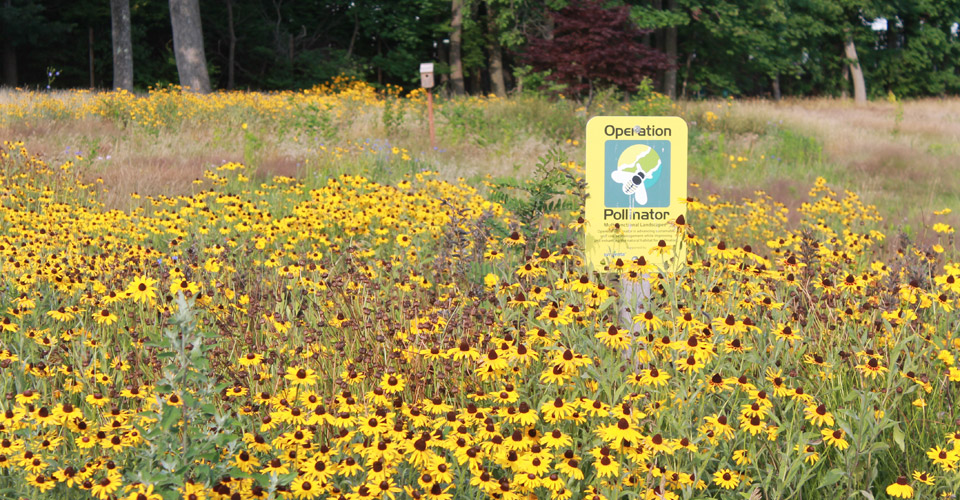
Pollinators are in trouble all over this country, including New York State, with documented significant declines in population levels. However, because golf courses provide a large expanse of mostly undeveloped land, they can help pollinators by providing habitat. These undeveloped expanses of land are of special significance especially in urbanized /suburbanized areas of the state that may not have expansive open areas.
The NYS BMP program has conducted a case study of the Rockville Links Club on Long Island where superintendent Lucas Knutson has renovated three areas on the golf course with pollinators in mind as well as adding bee hives to the golf course. These case studies (both written and video) show how Knutson established native areas, utilizes best management practices to protect pollinators, and how these efforts have been communicated to club members.
At Rockville Links, BMPs to protect pollinators from any impact from pesticide applications include:
- scouting, to determine pest location, movement, and overall pest pressure;
- product selection and selecting an effective product with low toxicity to bees and short residual toxicity;
- timing applications so as not to apply pesticides to blooming plants when bees might be present and mowing before applications; and
- watering in pesticides to drive product into the roots for uptake, unless the label indicates otherwise.
The NYS BMP program will be adding more information on BMPs for protecting pollinators and enhancing habitat to this web site later this year. In the meantime, additional BMPs for pollinators are detailed in the New York State Pollinator Protection Plan, http://www.dec.ny.gov/docs/administration_pdf/nyspollinatorplan.pdf.
